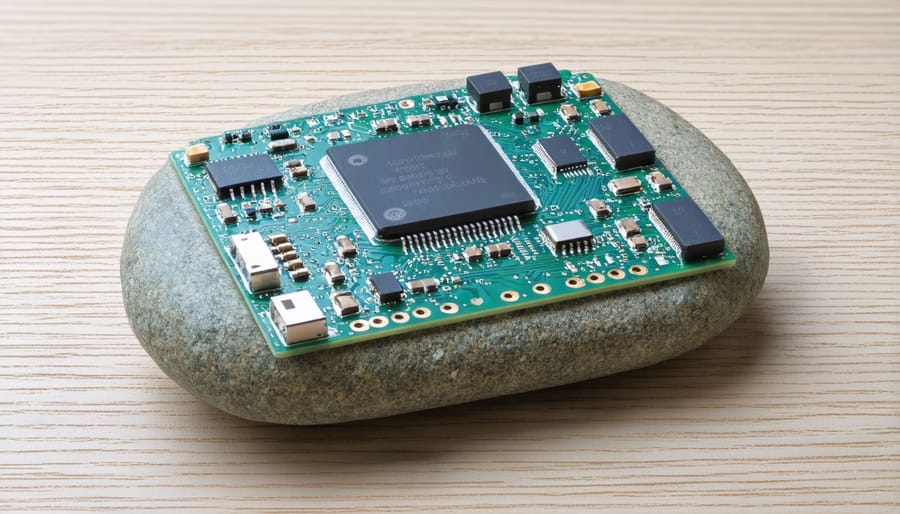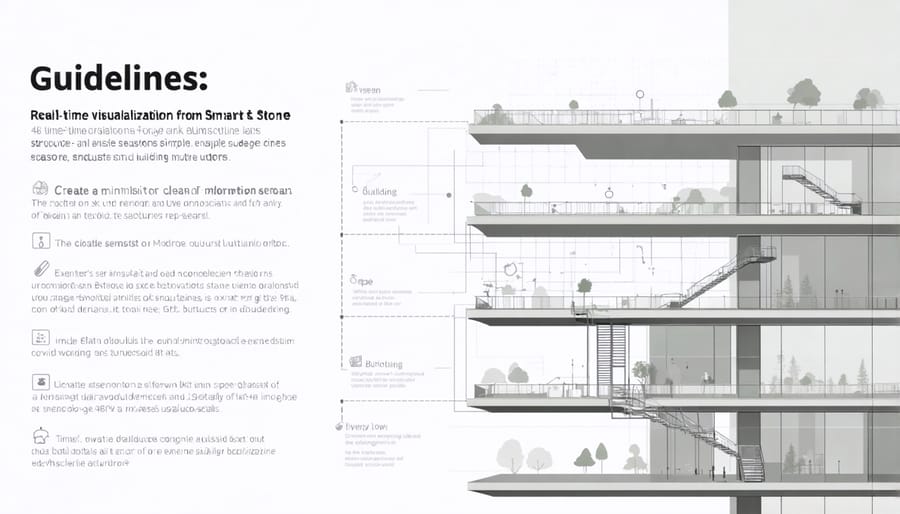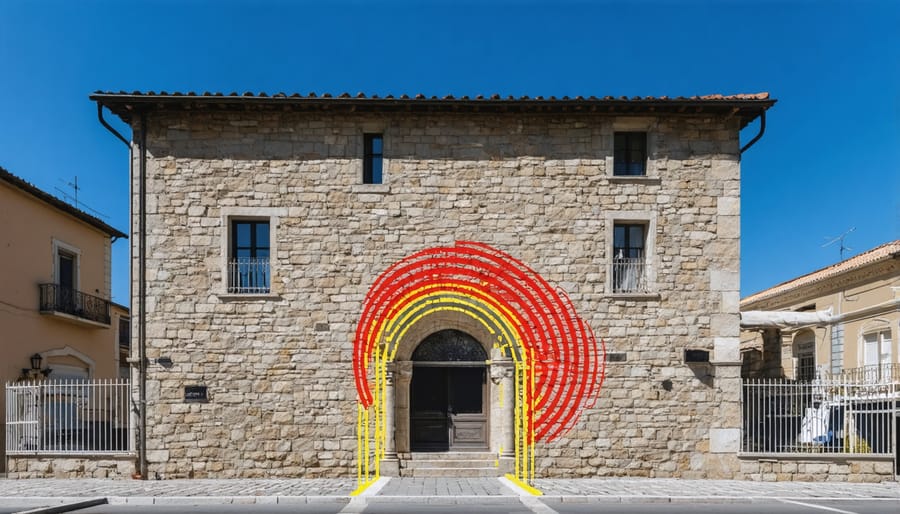Revolutionizing structural safety and maintenance, modern structure monitoring technology empowers engineers and facility managers to detect potential failures before they occur. Advanced sensor networks, coupled with artificial intelligence and real-time data analytics, now provide unprecedented insight into the health of buildings, bridges, and critical infrastructure.
These intelligent monitoring systems continuously track vital parameters including vibration patterns, stress distribution, and microscopic deformations – transforming traditional inspection methods into proactive maintenance strategies. By deploying a network of sophisticated sensors throughout key structural points, stakeholders gain immediate alerts about concerning changes in structural behavior, material degradation, or environmental impacts.
The integration of IoT-enabled devices and cloud-based monitoring platforms has made structural health monitoring more accessible and cost-effective than ever before. Real-time data visualization, predictive analytics, and automated reporting systems enable facilities teams to make informed decisions about maintenance priorities and structural interventions, ultimately extending infrastructure lifespan while ensuring public safety.
This convergence of engineering expertise and cutting-edge technology represents a fundamental shift in how we approach structural integrity – moving from reactive maintenance to predictive care through continuous, data-driven monitoring solutions.
How Smart Stone Sensors Transform Structural Monitoring
What Are Smart Stone Sensors?
Smart stone sensors represent a groundbreaking advancement in structural monitoring, combining traditional stone materials with cutting-edge digital technology. These sophisticated sensors are embedded directly within natural stone elements, working alongside advanced stone protection technology to provide real-time data about structural integrity.
The sensors consist of three main components: microscopic strain gauges, temperature sensors, and wireless transmission modules. These components work together to measure critical parameters such as stress distribution, thermal expansion, and potential structural movement. Each sensor is carefully calibrated to detect even minimal changes in the stone’s condition, with measurements accurate to within 0.1 millimeters.
What makes these sensors particularly innovative is their ability to operate autonomously for extended periods, powered by energy-harvesting technology that converts environmental vibrations into electrical power. The collected data is transmitted wirelessly to a central monitoring system, where advanced algorithms analyze the information to predict potential issues before they become serious problems.
The sensors are designed to be virtually invisible once installed, maintaining the natural aesthetic of the stone while providing crucial structural health information.

Key Features and Capabilities
Modern structure monitoring technology incorporates multiple sensing capabilities to provide comprehensive oversight of building health and stability. These systems typically measure key parameters including vibration levels, displacement, temperature variations, and structural loads in real-time. Advanced sensors can detect microscopic changes in stone and concrete structures, offering early warning signs of potential issues.
The technology utilizes a network of strategically placed sensors that communicate through wireless protocols, eliminating the need for complex wiring systems. Data collection occurs continuously, with measurements taken at predetermined intervals ranging from seconds to hours, depending on monitoring requirements.
Key monitoring capabilities include crack width measurement, tilt detection, and moisture content analysis. The systems can also track environmental factors such as humidity and temperature fluctuations that might affect structural integrity. Real-time alerts notify facility managers when measurements exceed predetermined thresholds, enabling prompt response to potential issues.
Most modern monitoring solutions feature cloud-based data storage and analytics platforms, providing secure access to historical data and trend analysis. Mobile applications allow stakeholders to view real-time data and receive alerts on their smartphones, ensuring constant awareness of structural conditions.
Real-Time Monitoring Benefits

Early Warning System
Modern structural monitoring systems employ a network of sophisticated sensors that work together to provide real-time alerts about potential issues before they become critical problems. These sensors continuously measure various parameters, including vibration patterns, stress levels, temperature fluctuations, and microscopic movements within stone structures.
The system typically consists of three main components: data collection sensors, processing units, and alert mechanisms. When integrated with digital visualization systems, these components create a comprehensive monitoring solution that can detect subtle changes in structural integrity.
Key detection capabilities include:
– Strain and stress monitoring in load-bearing elements
– Crack formation and propagation tracking
– Displacement and settlement measurement
– Environmental condition assessment
When sensors detect measurements outside predetermined thresholds, the system automatically triggers notifications to facility managers and structural engineers. These alerts are categorized by severity level, from routine maintenance requirements to urgent structural concerns requiring immediate attention.
The system’s machine learning algorithms improve detection accuracy over time by learning from historical data patterns. This predictive capability allows maintenance teams to address potential issues during scheduled maintenance periods, reducing both costs and structural risks.
Cost Savings Through Preventive Maintenance
Implementing structure monitoring technology delivers significant cost savings through strategic preventive maintenance planning. By continuously tracking structural health indicators, organizations can identify potential issues before they escalate into major problems, reducing emergency repair costs by up to 70%.
Real-world data shows that preventive maintenance programs supported by monitoring systems typically cost 12-18% less than reactive maintenance approaches. For example, a commercial building in Singapore saved $2.3 million over five years by addressing early signs of foundation stress detected through sensor data.
The technology enables maintenance teams to optimize their schedules based on actual structural conditions rather than fixed time intervals. This data-driven approach eliminates unnecessary maintenance while ensuring critical issues are addressed promptly. Building managers can prioritize repairs based on severity and urgency, allowing for more efficient budget allocation.
Additionally, insurance companies often offer reduced premiums for structures equipped with monitoring systems, recognizing the lower risk profile. The combination of reduced repair costs, optimized maintenance scheduling, and insurance savings typically results in a return on investment within 18-24 months.
Long-term benefits include extended structure lifespan, reduced downtime during repairs, and lower overall maintenance costs throughout the building’s lifecycle. These advantages make structure monitoring technology an essential investment for modern building management strategies.
Installation and Integration
Placement Strategies
Strategic sensor placement is crucial for effective structural monitoring of natural stone installations. The optimal positioning of sensors depends on several key factors, including the structure’s geometry, anticipated stress points, and environmental exposure patterns. For maximum effectiveness, sensors should be installed at critical load-bearing points and areas prone to moisture accumulation or temperature fluctuation.
When implementing nano-scale monitoring solutions, experts recommend a grid-based approach, with sensors placed at regular intervals of 10-15 feet in large installations. Critical areas requiring enhanced monitoring include joints between stone panels, foundation contact points, and areas exposed to harsh weather conditions.
For vertical applications, sensors should be positioned at different heights to track potential movement and stress distribution. Horizontal installations benefit from sensors placed near corners and at mid-spans where deflection is most likely to occur. Consider installing redundant sensors in particularly crucial areas to ensure continuous monitoring even if individual sensors fail.
The placement strategy should also account for accessibility during maintenance and calibration procedures. Avoid positioning sensors in locations that may interfere with regular cleaning or maintenance activities while ensuring they remain protected from accidental damage or tampering.
Integration with Building Management Systems
Modern structure monitoring systems seamlessly integrate with existing building management systems (BMS) through standardized communication protocols. These sensors work alongside traditional building controls, feeding real-time data about structural integrity, movement, and environmental conditions into centralized dashboards.
The integration process typically involves connecting sensor networks to the building’s main control system through wireless or wired connections. Data collected from various monitoring points is processed through gateway devices that translate the information into compatible formats for the BMS. This allows facility managers to view structural health data alongside other building metrics like HVAC performance and energy usage.
Advanced APIs and middleware solutions enable smooth data exchange between monitoring systems and various BMS platforms, regardless of manufacturer. This interoperability ensures that structural monitoring becomes part of the building’s comprehensive management strategy rather than operating in isolation.
Real-time alerts and automated responses can be programmed based on sensor readings. For example, if sensors detect unusual structural movement, the system can automatically adjust HVAC settings to reduce stress on the building while alerting maintenance staff. This integration creates a more responsive and efficient building management approach, where structural health monitoring becomes an active part of daily operations.
Case Studies: Success Stories
Historic Building Preservation
Historic buildings represent our cultural heritage, and modern sensor technology plays a crucial role in their preservation. The integration of sophisticated monitoring systems helps conservators and architects protect these irreplaceable structures from environmental threats and structural deterioration.
A prime example is the implementation of wireless sensor networks in Italy’s Venice Campanile, where moisture sensors and inclinometers continuously monitor the bell tower’s stability. These devices track minute movements and environmental conditions, allowing preservation teams to detect potential issues before they become critical.
Similar technology safeguards the Notre-Dame Cathedral in Paris during its restoration following the 2019 fire. Advanced displacement sensors monitor the structural integrity of the remaining Gothic architecture, while environmental sensors measure temperature, humidity, and vibration levels that could affect the ancient stonework.
In the United States, the Smithsonian Castle employs a comprehensive monitoring system that includes crack meters, tilt sensors, and weather stations. This network provides real-time data about the building’s response to various environmental conditions and structural loads, enabling maintenance teams to make informed decisions about preservation efforts.
The technology has proven particularly valuable in earthquake-prone regions. In Japan, historic temples utilize seismic monitoring systems that combine accelerometers with traditional displacement sensors. This integration provides crucial data about how these centuries-old structures respond to ground movements, helping engineers develop more effective preservation strategies.
These monitoring solutions have revolutionized heritage preservation by enabling proactive maintenance approaches. Rather than waiting for visible damage to appear, conservation teams can now identify and address potential problems early, significantly reducing restoration costs and helping ensure these architectural treasures endure for future generations.

Modern Commercial Applications
In today’s construction landscape, structure monitoring technology has evolved significantly, integrating seamlessly with modern stone technology applications and smart building systems. Leading architects and developers now routinely incorporate sensor networks during the construction phase, rather than retrofitting them later. These systems utilize a combination of fiber optic sensors, wireless monitoring devices, and AI-powered analytics to provide real-time structural health data.
Major commercial developments, particularly high-rise buildings and large-scale infrastructure projects, employ comprehensive monitoring solutions that track multiple parameters simultaneously. These include load distribution, thermal movement, vibration patterns, and moisture levels within stone and concrete elements. The data collected helps ensure optimal performance and early detection of potential issues.
Smart sensors embedded in structural elements can now communicate with building management systems, creating an integrated approach to facility maintenance. This technology has proven particularly valuable in regions with extreme weather conditions or seismic activity, where structural integrity monitoring is crucial for safety and compliance.
Recent innovations include self-powered sensors that harvest energy from structural vibrations, eliminating the need for battery replacement. Cloud-based monitoring platforms allow facility managers to access structural health data remotely, enabling proactive maintenance scheduling and reducing operational costs.
Shopping centers, hospitals, and transportation hubs have become early adopters of these technologies, implementing comprehensive monitoring systems that ensure both structural integrity and occupant safety. The integration of these systems with building automation has created smarter, more responsive structures that can adapt to changing conditions and usage patterns while maintaining optimal performance levels.
Smart stone sensor technology represents a groundbreaking advancement in structural monitoring, revolutionizing how we approach building safety and maintenance. By seamlessly integrating sensors within natural stone materials, this innovation has created new possibilities for real-time structural health monitoring while preserving the aesthetic appeal of stone architecture.
The impact of this technology extends beyond mere data collection. Building managers and engineers now have unprecedented insight into structural behavior, enabling proactive maintenance and potentially preventing catastrophic failures. This preventive approach not only enhances safety but also leads to significant cost savings in long-term building maintenance.
Looking ahead, the future of smart stone sensor technology appears promising. Ongoing developments in sensor miniaturization and wireless connectivity are making these systems more efficient and less invasive. We can expect to see broader adoption across various applications, from historic preservation to modern high-rise construction. The integration of artificial intelligence and machine learning algorithms will further enhance the technology’s predictive capabilities, allowing for even more sophisticated structural analysis.
As sustainability becomes increasingly important in construction, smart stone sensors will play a crucial role in extending the lifespan of buildings and reducing maintenance-related environmental impacts. This technology stands as a testament to how traditional building materials can be reimagined to meet contemporary challenges, creating smarter, safer, and more sustainable structures for future generations.










